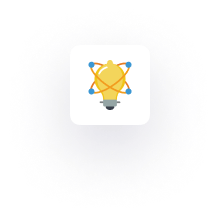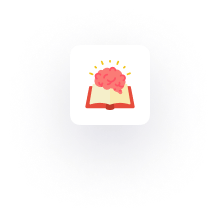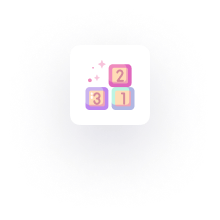The world of backend development can feel overwhelming at first, especially if you're just starting. However, you're in the right place if you’re a newbie or someone curious about backend development. In this guide, we will break down everything you need to know to become a backend developer in 2025, step by step.
We will explore the core concepts of backend development, the technologies you’ll need to learn, and the pathways to becoming a proficient backend developer. By the end of this guide, you’ll have a clear roadmap for your journey.
What is Backend Development?
Backend development refers to the server-side of web applications. It’s everything that happens behind the scenes that users don’t see, but is crucial to make the app work. As a backend developer, you will deal with databases, server management, APIs, and the business logic that powers the app.
To help you visualize, let’s break down the core components of a backend application:
Server: The physical or virtual machine that hosts the web application.
Database: The storage system where the application data is stored, such as MySQL, MongoDB, or PostgreSQL.
Application: The code that runs the logic of the app. It handles the requests made by users and fetches the data from the database.
APIs (Application Programming Interfaces): These allow different systems to communicate with each other. Backend developers often create and manage APIs.
Here’s a structured backend development content hub that will guide you step-by-step to become a great backend engineer.
Steps to Becoming a Backend Developer
Below are the steps to become a backend developer. We have included course recommendations are the latter part of this guide to help you get started immediately.
 1. Learn the Fundamentals of Programming
1. Learn the Fundamentals of Programming
As with any programming role, learning the fundamentals of coding is crucial. Before jumping into backend-specific technologies, you should have a strong understanding of the following core concepts:
Variables and Data Types
Control Structures (if statements, loops)
Functions and Methods
Object-Oriented Programming (OOP)
Programming languages that are commonly used in backend development include Python, Java, JavaScript (Node.js), Ruby, PHP, and Go. If you're just starting out, we recommend Python for its readability and versatility, which makes it a popular choice for beginners.
2. Choose a Backend Language
Once you're comfortable with the basics of programming, it’s time to pick a backend language. Each backend language has its strengths and is suited for different types of applications.
Recommended Backend Languages:
Python: A great starting language due to its simplicity and wide usage in backend frameworks like Django and Flask.
JavaScript (Node.js): If you already know JavaScript from frontend development, learning Node.js will allow you to use the same language on both the frontend and backend.
Java: Known for its stability and scalability, Java is used for large enterprise-level applications and backend systems.
Ruby: Ruby on Rails is a popular framework for building web applications quickly.
Go (Golang): A systems programming language designed by Google, Go is known for its speed and efficiency, making it ideal for high-performance applications.
For someone starting, we would recommend starting with Python or JavaScript (Node.js), as both have extensive resources and beginner-friendly frameworks.
At Masteringbackend, we have a series of courses on Python, Node.js, Rust, Ruby, PHP, and Golang created following industry-standard roadmaps to turn you into a great backend engineer.
3. Learn about Databases
Backend development involves dealing with data, so understanding how databases work is crucial. There are two primary types of databases you'll encounter in backend development:
Relational Databases (SQL): These databases store data in tables and use SQL (Structured Query Language) to interact with the data. Popular examples include MySQL, PostgreSQL, and SQLite.
Non-relational Databases (NoSQL): These databases are more flexible and store data in formats like JSON or key-value pairs. Examples include MongoDB, Redis, and Cassandra.
Learning SQL is essential for any backend developer, as it’s used to query relational databases. But understanding NoSQL databases is equally important, especially as the web becomes more data-driven.
When to Use SQL vs. NoSQL:
SQL (Relational) | NoSQL (Non-relational) |
Best for structured data with well-defined schemas | Ideal for unstructured or rapidly changing data |
Excellent for complex relationships (e.g., joins) | Less optimal for complex joins; better for hierarchical data with nested objects |
Example: MySQL, PostgreSQL, SQLite | Examples: MongoDB, Cassandra, Redis |
Use Cases: Financial systems, Inventory Management, ERP systems | Use Cases: Social media feeds, IoT data, Real-time analytics |
Vertically scalable (more powerful server) | Horizontally scalable (multiple servers or clusters) |
Strong ACID compliance (Atomicity, Consistency, Isolation, Durability) | Typically eventual consistency; strong consistency can be achieved with extra setup |
Get acquainted with databases and how they help store, retrieve, and manipulate data.
4. Understand How the Web Works
As a backend developer, you’ll need to understand how the web works at a fundamental level. This includes learning about HTTP (Hypertext Transfer Protocol), the protocol that powers web communication. Here are a few key concepts to master:
HTTP Methods: GET, POST, PUT, DELETE, and PATCH.
Request and Response: How clients (e.g., web browsers) send requests to the server, and how the server responds.
Status Codes: What different HTTP status codes (like 200, 404, 500) mean and how to handle them.
RESTful APIs: Learn how REST (Representational State Transfer) works to create standardized APIs that allow different systems to communicate.
Understanding the flow of information from the client to the server is essential in backend development.
Here's a diagram that illustrates how various components interact in a backend system:
 5. Master a Backend Framework
5. Master a Backend Framework
Once you’ve chosen your backend language and learned the basics, it’s time to dive into frameworks. Frameworks make backend development easier by providing tools and libraries that handle common tasks.
Popular Backend Frameworks:
Python: Django, Flask
JavaScript (Node.js): Express.js, Koa.js
Java: Spring Boot, Java EE
Ruby: Ruby on Rails
Each of these frameworks has its own strengths, but Django (Python) and Express (Node.js) are excellent choices for beginners. They both have large communities and extensive documentation, making it easier to get started.
6. Learn About APIs and Web Services
As a backend developer, you’ll often need to create and manage APIs (Application Programming Interfaces). APIs allow the backend to communicate with the frontend, third-party services, and external systems. Understanding how to build, test, and consume APIs is a crucial skill.
A commonly used architectural style for APIs is REST (Representational State Transfer), but you may also encounter GraphQL or gRPC.
Building a RESTful API:
Use appropriate HTTP methods (GET, POST, PUT, DELETE)
Ensure the API is stateless
Design meaningful resource names and use proper HTTP status codes
API and API design is a broad topic and one that is necessary for every backend engineer. We have covered API and API design in our newsletter series here.
7. Version Control with Git
Version control is an essential skill for any developer. Git helps you track changes in your code, collaborate with other developers, and deploy your code to production.
Learn how to use Git for managing your code and collaborating with other developers on platforms like GitHub or GitLab. Mastering Git is a must-have skill for backend developers.
Branching, Pull Requests, and Merge Conflicts:
Learn how to create feature branches and submit pull requests.
Understand how to resolve merge conflicts to maintain a clean codebase.
8. Testing and Debugging
Testing is a vital part of backend development. It ensures that the application behaves as expected and helps catch bugs early in development. Learn how to write unit tests, integration tests, and use debugging tools to troubleshoot issues in your backend code.
Types of Testing:
Unit Testing: Testing individual components in isolation.
Integration Testing: Testing how different components work together.
End-to-End Testing: Testing the entire flow of an application.
Testing Tools:
Jest (for Node.js)
PyTest (for Python)
JUnit (for Java)
9. Deploying Applications
Once you’ve built a backend application, you need to deploy it. Learning how to deploy your backend code to a server is a critical step in the development process. Popular deployment platforms include:
Heroku
AWS (Amazon Web Services)
Google Cloud Platform
Microsoft Azure
Learn how to deploy your backend applications to one of these platforms and understand the basics of CI/CD (Continuous Integration and Continuous Deployment).
CI/CD and Docker
Modern backend development requires not only deploying your applications but also setting up CI/CD pipelines to automate testing and deployment. Docker is a popular tool for containerizing applications, and Kubernetes helps with managing these containers in a scalable way.
10. Build Projects
The best way to cement your knowledge is by building projects. Here are some project ideas to get started:
Build a simple CRUD application (Create, Read, Update, Delete) using a backend framework and database.
Create a blog API that allows users to create and manage blog posts.
Build an e-commerce API for managing products, orders, and users.
You can explore a list of 100+ backend projects you can start building now.
Conclusion
Becoming a backend developer takes time, practice, and a commitment to learning. By following the steps outlined in this guide, starting with the basics, learning key technologies, and building projects, you’ll be well on your way to becoming a skilled backend developer.
If you’re looking for structured courses that will guide you step-by-step, check out MasteringBackend.com for a variety of backend-focused courses designed to take you from beginner to pro.
Remember, the journey to becoming a backend developer is all about consistency. Stay curious, keep building, and you’ll be creating powerful server-side applications in no time.



